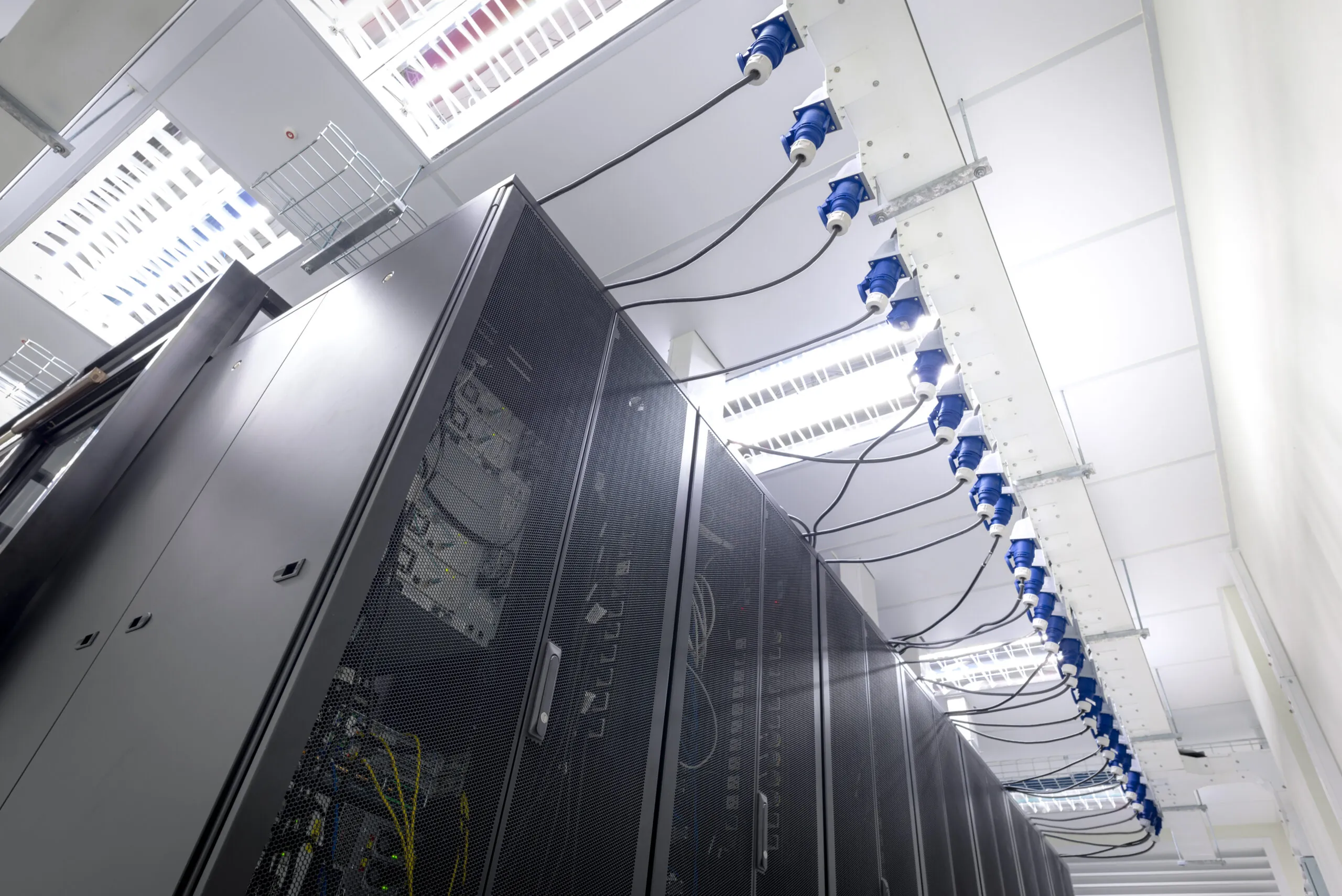When Battery Storage Technology Makes Sense in the Data Center18 min read

Many data centers seek to reduce generator starts either for economic or environmental reasons. Battery energy storage systems (BESS) now support extended runtime demands by shifting the load as necessary and for longer durations and can integrate with alternative energy sources, such as solar or fuel cells. This minimizes generator use and reduces their environmental impact.
According to Omdia’s Market Landscape: Battery Energy Storage Systems report, BESS is making headway as a means of storing excess renewable energy from wind and solar resources, which can then be used during periods when those renewable assets are not outputting energy. Utility scale systems are now being deployed such as the AES Alamitos BESS in southern California which replaces a natural gas generation plant. Its batteries provide 100 MW of energy storage which can be used during periods of peak demand. It uses lithium-ion battery storage technology from Fluence, a joint venture between AES and Siemens Energy.
Lithium-Ion
Lithium-ion batteries are now making their way into the UPS systems of data centers. As a result, Omdia expects the uninterruptible power supply (UPS) battery market to grow at 10% per year through at least 2030 as lead-acid batteries are changed out in favor of newer battery technologies. For the next year or so, Moises Levy, an analyst at Omdia expects lithium-ion and lead-acid batteries to have a roughly equal share of the global UPS battery market. By the end of the decade, lithium-based batteries will make up 65%.
The data center vendor community is taking note. Investment in this area is already bearing fruit in terms of new offerings. Vertiv, for example, has introduced the Vertiv DynaFlex BESS to provide greater flexibility in the use of utility power. Its lithium-ion batteries provide easy and repeated transitions between energy sources such as solar, wind, and hydrogen fuel cells. It can be paired with Vertiv DynaFlex EMS (Energy Management System) for those data centers interested in advanced demand management features sch as sharing or selling energy back to the grid.
“Sustainability has become a core tenet of many organizations’ growth plans but concerns about operational resilience and growing stress on the grid have limited efforts to adopt alternative energy sources,” said Peter Panfil, vice president, global power, Vertiv. “The Vertiv DynaFlex BESS allows organizations to leverage the strengths of these new energy generation assets and relegates the traditional utility provider to a complementary role in a more dynamic, efficient, and reliable mix of energy sources.”
The system’s power conversion system (PCS) is designed to support 2 millisecond output, an essential feature when shifting the load between the grid, onsite power, or renewable assets. It also enables a data center to phase out diesel generators, which are coming increasingly under fire due to emissions restrictions.
Such technologies can intelligently integrate with the grid and deliver on a pressing objective – reducing generator starts. BESS supports extended runtime demands by shifting the load as necessary and for longer durations and can integrate seamlessly with alternative energy sources, such as solar or fuel cells. This minimizes generator use and reduces their environmental impact.
How to Deploy Lithium-Ion BESS
Lithium-ion batteries are gaining ground due to factors such as their smaller footprint and the speed with which they can be recharged. However, the presence of more advanced battery technology does not necessarily mean that every data center should change out its lead-acid batteries for lithium-ion. Immediate change out should only be considered by those with the budget to support it.
“Smaller data centers with lower power demands, those located in regions with stable power grids, and facilities with non-critical workloads tolerant to short power interruptions may not justify the investment in BESS,” said Alexander Meek, Co-founder and President at Moxion Power. “Additionally, organizations facing budget constraints may find the upfront costs of implementing BESS quite high.”
Probably the best way forward is to switch gradually to lithium-ion when older battery types have reached end-of-life. That enables the data center to gain familiarity with the technology over time.
Meek suggested that investors interested in deploying BESS in their data centers should begin with a comprehensive energy audit to understand consumption patterns. Following this, an assessment of workload criticality helps determine the necessary level of uninterrupted power supply.
“A thorough cost-benefit analysis is crucial to evaluating the economic feasibility of BESS investment. Regulatory compliance, vendor selection, and the development of a detailed integration plan round out the essential steps in this process,” said Meek.
Another tip: Opt for scalable solutions that can accommodate future growth in power requirements. A BESS product that has a robust monitoring system and requires little maintenance will be key in addition to training staff on BESS usage. Exploring collaboration with local utilities for grid services and incentives can also further enhance the benefits of BESS.
Safety First
Those deploying lithium-ion batteries are advised to read up on the fire risks these new batteries pose and the precautions they should take to minimize risk. Fires involving lithium-ion batteries can be challenging due to the duration they burn and how fast the fire can spread. Jeff Dunkel, a fire protection engineer with the National Fire Sprinkler Association (NFSA) said standards and best practices are evolving to enable them to be safely used in data centers and other facilities.
“Lithium-ion batteries are here to stay,” said Dunkel.
He offered tips such as:
- Lithium-ion batteries should be supported by fire protection that can continuously supply water to keep fires from spreading.
- BESS can be kept in enclosures and shipping containers to isolate them from other data center equipment.
- Such enclosures should be provided with a sprinkler system inside the shipping container.
- Consult with a fire protection engineer when planning to install lithium-ion batteries.
Real-time monitoring, data-driven optimization.
Immersive software, innovative sensors and expert thermal services to monitor,
manage, and maximize the power and cooling infrastructure for critical
data center environments.
Real-time monitoring, data-driven optimization.
Immersive software, innovative sensors and expert thermal services to monitor, manage, and maximize the power and cooling infrastructure for critical data center environments.

Drew Robb
Writing and Editing Consultant and Contractor
0 Comments